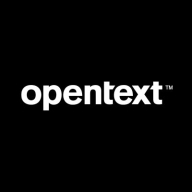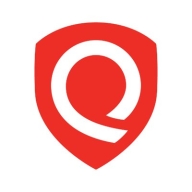

Qualys Web Application Scanning and OpenText Core Application Security are competitive tools in application security. While Qualys is preferred for pricing and support, OpenText excels in integration capabilities and feature-rich offerings.
Features: Qualys Web Application Scanning integrates with Selenium IDE for automated logins, protects against zero-day vulnerabilities, and ensures OWASP Top 10 compliance. Its reporting is comprehensive with minimal false positives. OpenText Core Application Security focuses on static and dynamic scanning, offering user-friendly interfaces and detailed reports, supporting multiple programming languages efficiently.
Room for Improvement: Qualys Web Application Scanning could enhance its API integration, reduce false positives, and simplify its user interface. OpenText Core Application Security users suggest improving integration features, refining reports, and minimizing false positives.
Ease of Deployment and Customer Service: Qualys emphasizes easy deployment with its cloud-first approach and offers 24/7 support, though it could be more proactive. OpenText primarily supports on-premise deployments and receives positive customer service ratings but has room for improvement.
Pricing and ROI: Qualys is seen as cost-effective for large deployments due to competitive licensing, whereas OpenText's higher pricing aligns with its detailed findings and strong ROI through automation and reduced failure rates.
I had direct interaction with them, which facilitated how we onboarded Fortify.
Support tickets often stay open for one month to three months, which leads to customer frustration.
They have various options in the vulnerability management process, and when we initially bought our license, we didn't realize we needed PCI for better results, which isn't included in the default configurations.
Once we purchase the license, we have access to top-notch support.
I have dealt with Qualys's technical support, and any enhancements are challenging.
If a customer wants to know the tools and the technology used for their application to scan their application, they provide less information on that.
It produces similar vulnerability results as other tools such as Nessus based on version checks instead of real impact checks.
It is licensed for assets, so we just contact the team for additional licenses if needed.
At one point, there was a limitation on reporting for 100,000 assets at a time.
It would be beneficial if Fortify could check for CVEs (Common Vulnerabilities and Exposures) in third-party libraries, which I currently use a separate dependency checker tool for.
One thing I would highlight is if Fortify can focus more on the centralized dashboard of the tools because nowadays, tools such as SentinelOne also exist for identifying security issues, but they have a centralized dashboard that merges their cloud solution and application security side solution together.
It would be better for Fortify on Demand if they could analyze not only the security pillar but also maintainability, portability, and reliability, covering all pillars of ISO 25000.
With the growing reliance on AI, Qualys Web Application Scanning should be updated to handle AI-based applications and LLM-based attacks.
Qualys Web Application Scanning does IP-level testing, requiring direct input of credentials, and can only scan a few pages to provide known generic vulnerabilities.
One area of improvement is reducing false positives by prioritizing agent findings over remote findings when there is a corresponding local agent finding.
They offer discounts on bulk licenses, making it cheaper compared to competitors like Veracode DAST.
I find it a bit expensive compared to other competitors.
Regarding pricing, I think for personal use, it is costly, but if organizations are ready to pay, then it is fine as they are using it.
Fortify helps me find serious issues, such as developers inadvertently leaving access tokens, including API access tokens, in the source code.
On demand you have two levels of reports: the first from the tool, which is the same as we can get from Fortify on-premises, and a next level reporting made by experts from OpenText, leading to a more condensed and precise report as level three.
Additionally, you can integrate Fortify in CICD pipeline, so you get real-time updates about the security issues in your pipeline.
It effectively detects vulnerabilities like the OWASP Top 10 without any issues in reporting.
Qualys Web Application Scanning is accurate and provides minimal false positives.
The product helps by providing options for remediating vulnerabilities it finds, making it really useful.
| Product | Market Share (%) |
|---|---|
| OpenText Core Application Security | 3.2% |
| Qualys Web Application Scanning | 1.8% |
| Other | 95.0% |


| Company Size | Count |
|---|---|
| Small Business | 17 |
| Midsize Enterprise | 8 |
| Large Enterprise | 44 |
| Company Size | Count |
|---|---|
| Small Business | 8 |
| Midsize Enterprise | 6 |
| Large Enterprise | 27 |
OpenText Core Application Security offers robust features like static and dynamic scanning, real-time vulnerability tracking, and seamless integration with development platforms, designed to enhance code security and reduce operational costs.
OpenText Core Application Security is a cloud-based, on-demand service providing accurate and deep scanning capabilities with detailed reporting. Its integrations with development platforms ensure an enhanced security layer in the development lifecycle, benefiting users by lowering operational costs and facilitating efficient remediation. The platform addresses needs for intuitive interfaces, API support, and comprehensive vulnerability assessments, helping improve code security and accelerate time-to-market. Despite its strengths, challenges exist around false positives, report clarity, and language support, alongside confusing pricing and package options. Enhancements are sought in areas like CI/CD pipeline configuration, report visualization, scan times, and integration with third-party tools such as GitLab, container scanning, and software composition analysis.
What features define OpenText Core Application Security?Industries like mobile applications, e-commerce, and banking leverage OpenText Core Application Security for its ability to identify vulnerabilities such as SQL injections. Integrating seamlessly with DevSecOps and security auditing processes, this tool supports developers in writing safer code, ensuring secure application deployment and enhancing software assurance.
Qualys Web Application Scanning (WAS) is a fully cloud-based web application security scanner. The scanner will automatically crawl periodically and test web applications to discover potential vulnerabilities, including cross-site scripting (XSS) and SQL injection. The consistent testing equips the automated service to generate consistent results, lessen false positives, and offer the ability to scale to protect thousands of websites effortlessly.
Qualys Web Application Scanning is bundled with different scanning technology to carefully scan websites for malware infections and will send notifications to website owners to assist in preventing blacklisting and brand reputation damage. As digital transformation takes place in various organizations, Qualys WAS gives organizations the ability to track and document their web app security status through its interactive reporting capabilities.
Qualys WAS empowers organizations to remediate any web application vulnerabilities quickly. Some of the key tools offered are:
Benefits of Qualys Web Application Scanning
Qualys Web Application Scanning offers many benefits, including:
Reviews from Real Users
Qualys Web Application Scanning stands out among its competitors for a variety of reasons. Two of those reasons are its progressive scan and quick detection of vulnerabilities.
P.K., a senior software developer at a tech vendor, writes, "The feature that I have found most valuable is the progressive scan. It is good. It's done in 24 hours."
Nagaraj S., lead cybersecurity engineer at a tech service company, notes, "I have found the detection of vulnerabilities tool thorough with good results and the graphical display output to be wonderful and full of colors. It allows many types of outputs, such as bar and chart previews."
We monitor all Application Security Tools reviews to prevent fraudulent reviews and keep review quality high. We do not post reviews by company employees or direct competitors. We validate each review for authenticity via cross-reference with LinkedIn, and personal follow-up with the reviewer when necessary.